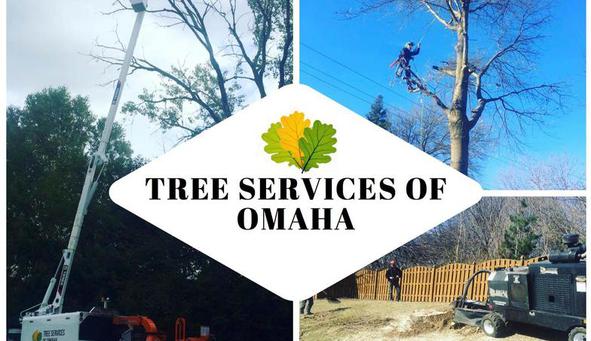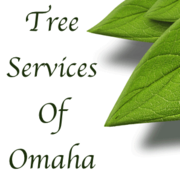Autumn Tree Planting
by David Steg on 10/08/14
Autumn Tree Planting
Autumn can be the perfect time to plant new deciduous trees or shrubs. There are a host of reasons that autumn may be the best season to plant, surpassing even the spring, because the autumn months of September through December have distinct advantages.
Advantages
• Quick Establishment – Like autumn seeded lawns, planted trees in autumn have a chance to become established in the landscape during the late fall and winter, and are all ready to burst into growth by spring.
• Easier Weed Control – Autumn planting is done after the growing season has ended. This means that any weed seed in the soil is dormant, unlike in spring when it's highly energized and will compete with the tree for moisture and nutrients.
• More Time In Autumn – In the autumn, the labor crews have more time for planting than during the spring rush to get everything done. This is because there is a longer span of weeks suitable for planting and there are more good weather days than during the unsettled weather of spring.
• Better Weather – The weather is conducive for good root growth as the days are shorter, the heat wave has ended, and the moisture is evenly available. Plant roots grow anytime the soil temperature is 40° F (4° C) or higher, which may occur all winter long in the U.S. southern states. During the winter months, the root systems of autumn planted trees develop and become established. When spring arrives, this expanded root system can support and take advantage of the spring growth surge.
• Sap Flow – Late autumn is the best time to plant trees and shrubs because it's then that the sap has stopped rising.
• Physiology – From a physiological viewpoint, the cells of woody plants have lignified and are less subject to water stress in the autumn. This is unlike the succulent tissue typical of the spring. Shoot growth has stopped, yet functional leaves can still provide carbohydrates for root growth, which is capable of continuing until soil temperatures go below 40° F (4° C) at which point, root growth stops. However, keep in mind that a dry autumn followed by a very cold winter can result in an increased mortality of autumn planted trees. Because of this, irrigation for newly planted trees in autumn is essential.
• Low Price – Another benefit to fall planting is price. Some nurseries will lower their prices to sell its leftover stock. However, avoid amazing bargains; if it dies, it is not a bargain.
Disadvantages
• Failure – Trees planted in the fall are more prone to winter failure than those planted in the spring, especially if the roots have not become established before the ground freezes. To minimize this problem, be sure to plant when there is at least one month for root growth before the soil temperature drops below 40° F (4° C) under the surface, at the root level.
Some deciduous trees have a higher survival rate when planted in spring. Trees with fleshy roots are less successful when planted in the autumn as are thin barked trees. The following lists may be used as a guide when selecting woody plant material for autumn planting.
List of Trees Suitable for Autumn Planting
Acer spp. Maple
Aesculus spp. Buckeye
Amelanchier spp. Serviceberry
Celtis occidentalis Hackberry
Cercidiphyllum japonicum Katsura
Cercis canadensis Redbud
Fraxinus spp. Ash (plant in non-EAB areas)
Ginkgo biloba Ginkgo
Gleditsia triacanthos spp. Honeylocust
Gymnocladus dioicus Kentucky Coffeetree
Juniperus spp. Juniper
Maclura pomifera Osage Orange
Malus spp. Crabapple (Check with local nurseries, because some say spring only)
Morus alba Mulberry
Phellodendron amurense Cork Tree
Pyrus calleryana Callery Pear
Robinia pseudoacacia Black Locust
Sophora japonica Japanese Pagoda Tree
Thuja occidentalis Arborvitae
Ulmus spp. Elm
Just be sure to plant early enough that the tree roots get a one month head start before the ground freezes on the surface.
List of Trees with a High Risk of Loss
Many nursery catalogs indicate certain trees have a high risk of failure if planted in the fall. If autumn planting is desired, use freshly dug or container stock. Some of these trees are:
Betula spp. Birch
Carpinus spp. Hornbeam (Check with local nurseries, as some locations say spring only)
Cornus florida Dogwood (Check with local nurseries, as some locations say spring only)
Crataegus spp. Hawthorn (Check with local nurseries, as some locations say spring only)
Koelreuteria paniculata Goldenraintree (Check with local nurseries, as some locations say spring only)
Liquidambar spp. Sweet Gum (Check with local nurseries, as some locations say spring only)
Liriodendron tulipifera Tulip Tree (Check with local nurseries, as some locations say spring only)
Magnolia spp. Magnolia
Prunus spp. Flowering cherry (Check with local nurseries, as some locations say spring only)
Taxus spp. Yews
Tilia spp. Linden (Check with local nurseries, as some locations say fall only)
List of Trees That Do Best with Spring Planting
Studies have determined that the tree species listed below will fail from autumn planting because the loss of roots interferes with the development of a tree's cold tolerance.
Abies spp. Fir
Carya spp. Hickory
Catalpa spp. Catalpa
Chamaecyparis nootkatensis Nootka Falsecypress
Cladrastis kentukea Yellowwood
Fagus sylvatica Beech
Juglans spp. Walnut
Larix spp. Larch
Nyssa sylvatica Tupelo, Sour Gum, Black Gum
Ostrya virginiana Hophornbeam
Oxydendrum arboreum Sourwood
Picea spp. Spruce (Check with local nurseries, as some locations say fall only)
Pinus spp. Pine (Check with local nurseries, as some locations say fall only)
Platanus spp. Plane Tree
Populus spp. Poplar, Aspen
Quercus spp. Oak
Salix spp. Willow
Sassafras albidum Sassafras
Sorbus aucuparia Mountain Ash
Taxodium distichum Bald Cypress
Tsuga canadensis Hemlock
Zelkova serrata Japanese Zelkova



